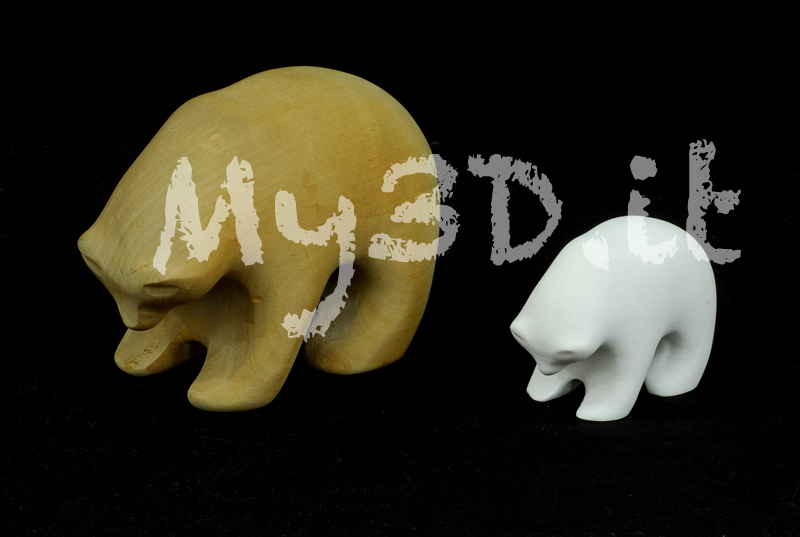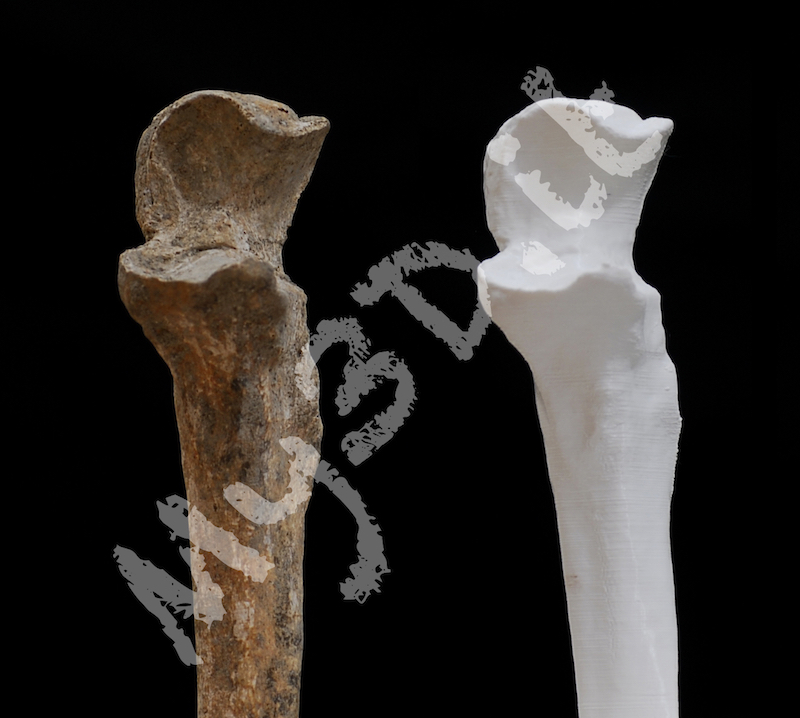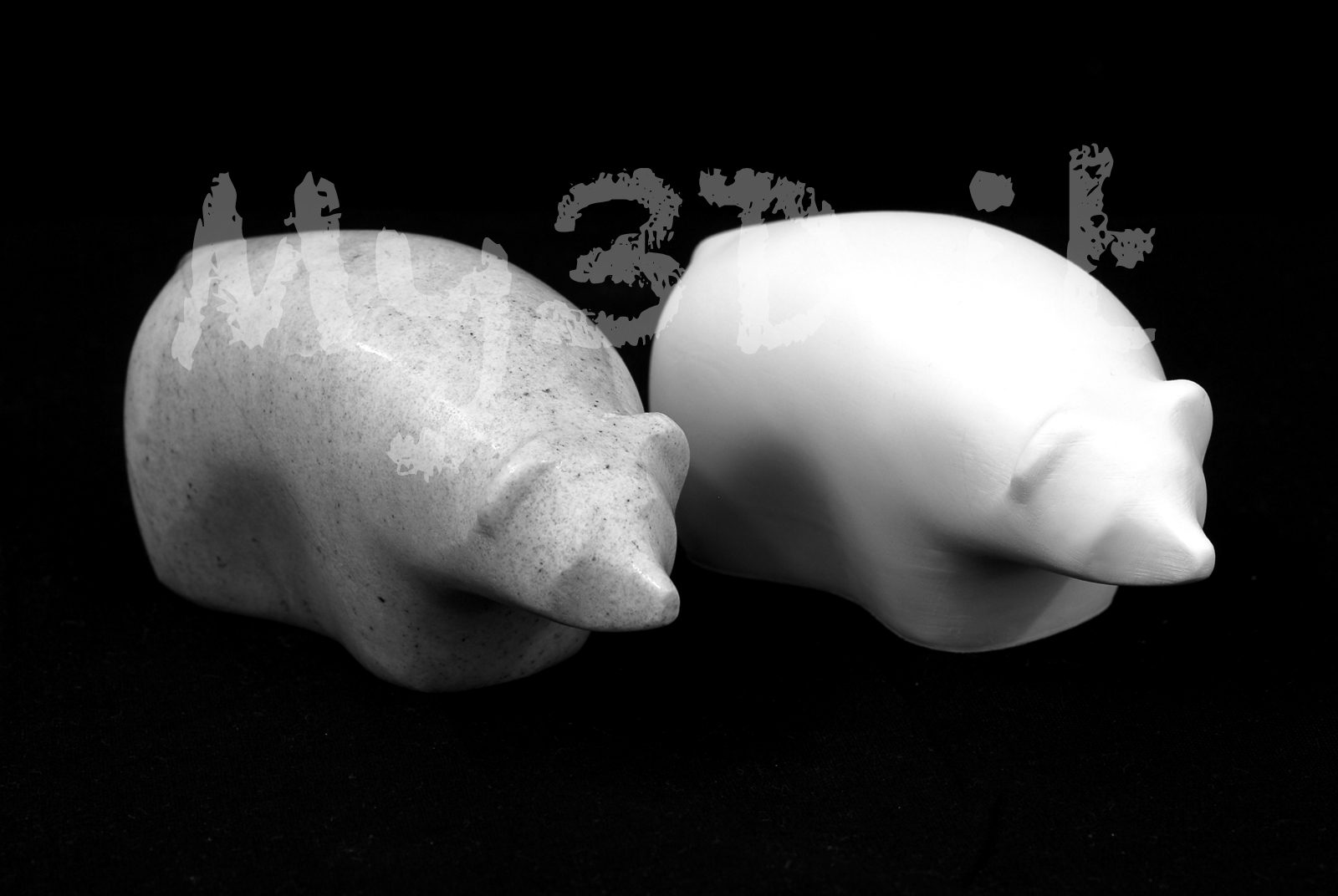-
Posts
257 -
Joined
-
Last visited
Content Type
Forums
Events
3D Prints
Posts posted by personal-drones
-
-
Z home is down, not up. If you home Z and the plate is not calibrated (too high), the nozzle will crash on the plate, hence the ugly noise I would guess.
-
Excellente idée. Super le site!
-
-
Great job peggy, will look into these disks.
These discs are doing a good job on the polishing of the metal filaments from Colorfabb: Habras discs. http://www.keystoneindustries.com/en/rotary/hatho_habras_discs.html
Different grids embedded in a polyamide brush, yellow-80, red-220, blue-400 grid. Perfect for irregular surface and hard to reach parts. There is almost no heat generated, but keep it moving...
Finish with a soft cloth with Brasso or polishing paste.
These examples, bonze and brass, were 5 minutes of work
-
Les parois ca tient, le fond pas du tout. Ca devrait se resoudre facilement avec une passe de XTC-3D par example. La paroi c'est etanche.
-
The default quickprint high quality settings are not the best for dealing with overhangs. To get better results may I suggest you start from the "normal" quality in quickprint (layer height will be 0.1). Then switch to full settings and click yes when it asks if you want to carry over the settings.
Then you need to lower the print speed.
Go in the "Advanced" tab and set the infill speed and inner shell speed to 40 and the outer shell speed to 30.
These changes alone will yield much much better overhangs.
For an even better performance you could do infill 40, inner shell 30, outer shell 25.
The slower you go, the more you can lower the print temperature. So if you go slow you can also try to reduce the temperature from 210 to say 200-205. This also helps with the overhangs.
-
Tres jolis ces vases, est-ce que tu as déjà essayé la technique qui consiste à imprimer en une seule couche continue: au lieu d'imprimer couche par couche, la plaforme descend continuellement tandis que la tete imprime en continue sans jamais s’arrêter. En gors ca fait une spirale. C'est une technique qui fonctionne avec les vases justement. Dans Cura, cette option est dans Expert Settings, dans la section Black Magic, en gros les truc à essayer à tes risques et périls. Mais je crois que ca ne marche que si tu ne fais qu'une seule épaisseur de paroi, je ne sais pas si c'est très solide.
Olivier le vase orange c'est fai comme tu dis, avec le mode "spiralize" de Cura
-
Vases
Mon dessin, vase "Laura" http://www.thingiverse.com/thing:748242
Dessiné avec moi3D.
Recommandé: infill 0



Dessous:
Temps d'impression 3h
Layer 0.6
Temp 230°C
Buse 0.8 mm
Speed 40
Infill 0
White PLA Colorfabb

Dessous:
Orange PLA
Printing time 2h 45'
Object height 20cm
Nozzle 0.8
Shell 0.8
Speed 30
Temp 210
Layer height 0.25 mm
Model:
http://www.thingiverse.com/thing:18672
Cura "Spiralize" mode

Dessous:
http://www.thingiverse.com/thing:481259
Height: 30cm
Imprimé en 2 parties et puis collé.

-
Welcome to the club
 To print PLA use 55°C and nothing on the plate, it is not needed.
To print PLA use 55°C and nothing on the plate, it is not needed. -
Rigs, j'ai beaucoup exploré le sujet et j'ai experimenté avec Kinect. Ma conclusion c'est que pour avoir un bon scanner pour objects relativement petits ou tres petits, il faut metre en compte quelque miliers de euros. Kinect ou similaire ne marche pas. Ca marche bien pour des choses grandes comme les personnes.
Par contre, avec un bon appareil photo (reflex), une bonne illumination et un tripod (et beaucoup de patience), j'ai reussi a faire ca gratuitement, en utilisant http://apps.123dapp.com/catch/:



-
Well if you want to change the speed of the print when in full settings, you need to go to the advanced tab and change the speeds there. The speed in the basic settings will do nothing unless you have some speeds set to zero in advanced.
To print slow you could go in the advanced tab and set infill and inner shell speeds to 25 and outer shell speed to 20 for example, while leaving the other values as they are.
For infill 100% you can set this in the basic settings, "Fill density".
To avoid the chewing you can put a little mineral oil in the bowden tube and maybe raise printing temperature a bit. Chewing happens when the filament meets resistance while advancing.
-

and then:

Used a glue stick, holds nicely for now.
-
LOL I had the feeling something was not right here
-
Printed with Chrome filament on max temp of 260 ºC
Great results! Which chrome filament if I may ask?
-
 1
1
-
-
My first go at a twisted vase design:


Find the file here: http://www.thingiverse.com/thing:748242
Printed in white PLA with a 0.6 mm nozzle in spiralize mode of Cura, it's a 12 hours print at 30 mm/s.
-
"The missing post". Super, merci bien! Ca me tente beaucoup.
-
Is it water tight? My spiralize objects sliced with Cura have tight outer shells but the bottom looks like a sieve.
Not watertight, the bottom is like you describe. I was thinking to pass some XTC-3D to seal it.
-
The temperature is 245C speed 60 and material flow 95%. I figured that out after some test prints all the pieces came out nice with these settings.
Thanks!
-

Orange PLA
Printing time 2h 45'
Object height 20cm
Nozzle 0.8
Shell 0.8
Speed 30
Temp 210
Layer height 0.25 mm
Model:
http://www.thingiverse.com/thing:18672
Printed in "Spiralize" mode of Cura
-
The designer of the 3dSolex Olsson block, Anders Olsson, is printing self made material which completely wipes out a nozzle in a few hours only!
You just have to calibrate the plate WHILE the print is ongoing, every half an hour or so. What's the big deal. LOL
PS: Also, mastering the art of changing the nozzle while the print is running, without pausing, is not for everyone.
-
@Personal drones
I dont know if I gave you guys the wrong impresion, I never printed PLA with temperatures above 210c. If I type that somewere I'm sorry, please tell me were I wrote that so I can change it not to confuse more ppl.
Hmm probably you are saying that if there was PLA left in the nozzle when I was printing with XT it will burn up inside?
I have to change materials often. Thats why i'm considering to buy the Olsson block kit. Do you have any experience with the exchangeable nozzle form 3dSolex?
Well, you wrote: "I lower the temp to 230c. It looks better. but not good. The others are at 60 inner shell speed 30 outer shell speed at 0.2 layer height both at 260c."
So I was assuming you were routinely using very high temperatures. My apologies if I got this wrong.
The Olson Block is awesome, I am so very happy to have installed it. The freedom to use different nozzles sizes is amazing. I also recommend the I2K insulator that will greatly improve the life of the teflon coupler. http://www.3Dsolex.com
-
@Sworrdriff thank but a lot of people say that when removing the nozzle one cable be fragile and may break by removing it

I just want to buy one advances, for not to be blocked

Adrien si tu regarde bien le temp sensor sur le block. Tu doit regarder si un peu de la partie terminale en alluminum sort en dehors de la surface block, ou si c'est completement enfoncé dedans. Dans le premier cas, avec un bonne pince et peut etre un peu de WD40, c'est facile de sortir le senseur. Si c'est completement enfoncé dedans, tu n'a pas de prise sure pour la pince, et tu risque de tirer sur les fils et de le casser. Dans mon cas ca a eté tres facile. Comme toi j'était bien préoccupé, mais tout c'est bien passé. Je n'ai meme pas eu besoin de chauffer la tete pour sortir le senseur.
C'est un question de chance, ca depend de combien le senseur a eté enfoncé dans le trou lors du montage.
-
Ultmaker2
Colorfabb XT
4.7 kilo
38 pieces
nozzle 0.8
layer height 0.5
printing time 92.5 hours
Great job!
May I ask which temperature and speed you use to print with a 0.8 nozzle at 0.5 mm layer height?
-
so printing is Slower
How much slower Swordriff?




Infill failure
in UltiMaker 3D printers
Posted
The speed for infill should be set in the "Advanced" tab, putting 50 in the Basic tab will not help to reduce infill speed.